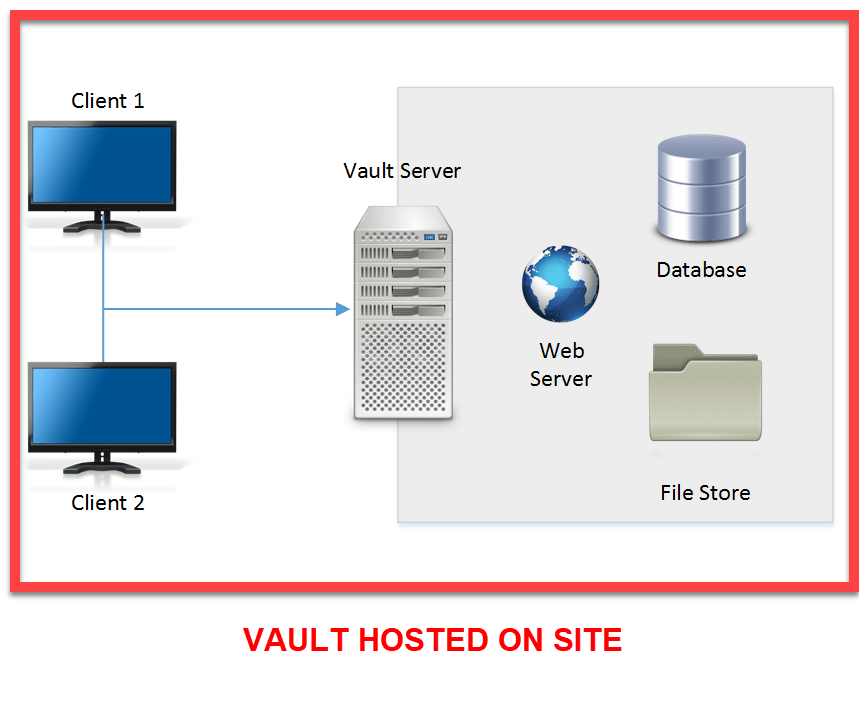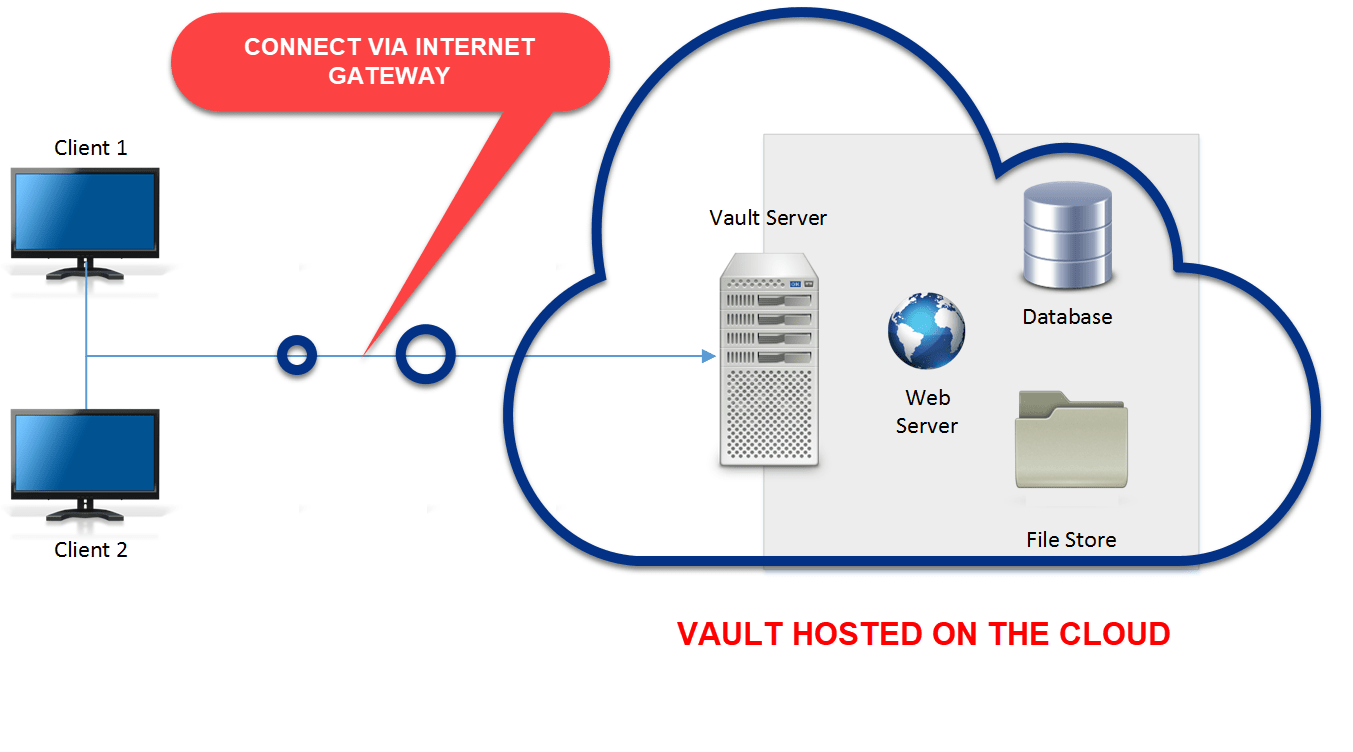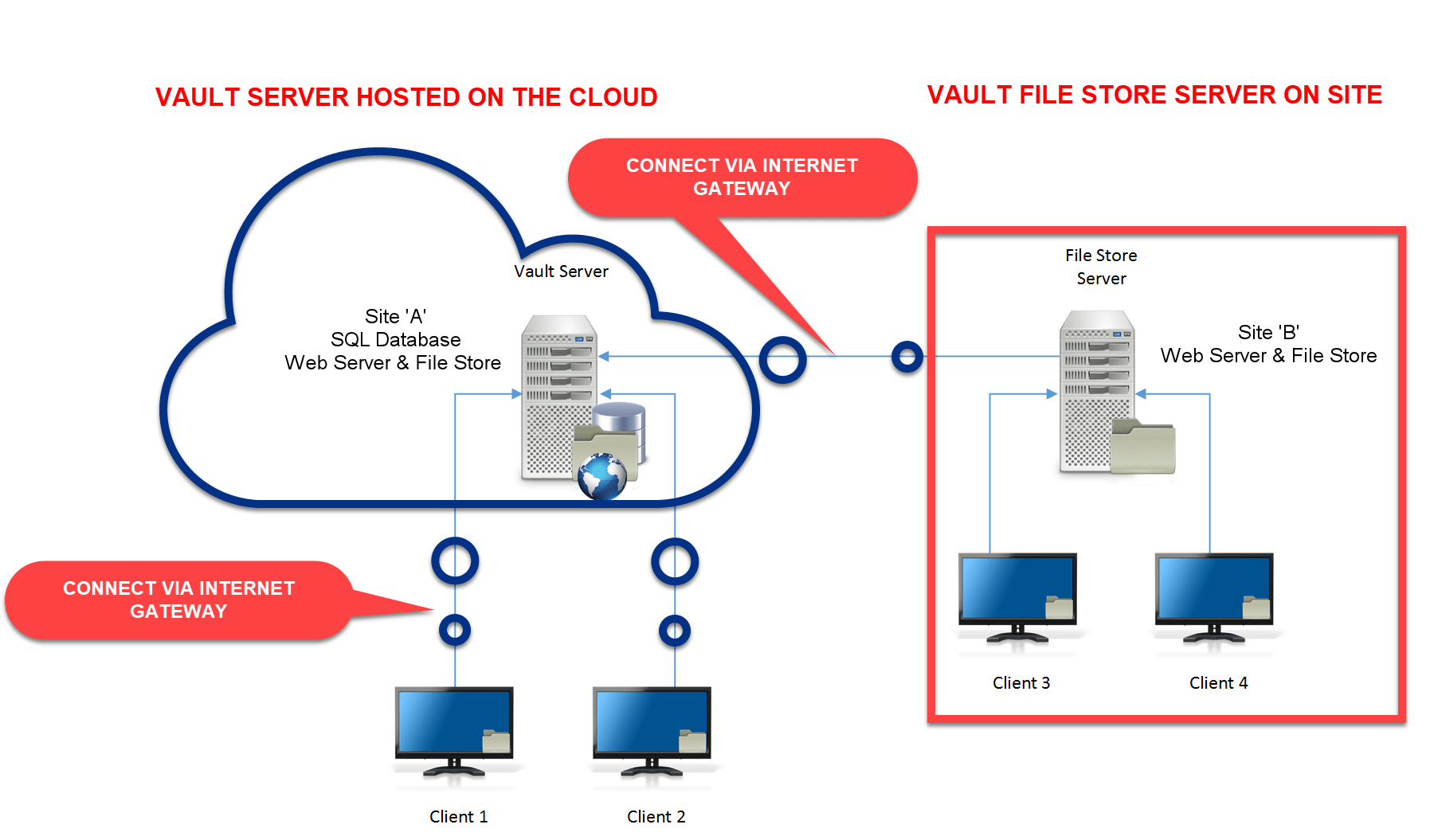Adapting for Remote Work
Over the past several months organizations have been quick to make adjustments to how they work by enabling their teams to work remotely. Talking to customers, many have made the transition successfully, but it has not been without its challenges. Companies scrambled to find ways to give employees access to all the resources they were accustomed to in the office. How do you access the file servers from home? For many engineers and designers, the question was, how do I access Vault from home?
For many customers, a good immediate solution is a VPN (Virtual Private Network). To simplify, a VPN is an extra layer of security between users’ machines outside the firewall and company servers inside the firewall. As a result, you access your network thru a VPN “tunnel” that is secure yet allows authenticated users to “see” the network as if they were on site. On-site everything is pretty much the same.
The server is still in a cold server room, but IT still must maintain software, hardware and manage access. This solution may be something that was already in place by a few pre-existing remote users. In many cases it just needed to be expanded to more remote users within the company. Of course, others had to figure out a VPN on the fly and fine tune it along the way. The biggest challenge with any VPN is performance. Especially when you add more users into the mix.
Utilizing Autodesk Vault for Data Management
Autodesk Vault Cloud is another way to enable remote access for your company’s data. We have helped several customers over the years transition their Vault data to a cloud server. This refers to a service where instead of having you own servers on premise, you utilize third party “virtual” machines. There are a few cloud hosting services out there, but the most common names you will hear are Amazon Web Services (AWS) and Microsoft Azure. Below are several advantages to going this route.
- Hardware – Eliminate purchasing/acquiring
- Capacity – Quickly expand resources needed, memory, processing power
- Virtualized Environment – Up and running quickly, no waiting for hardware
- Remote Access – Cloud services by nature are purpose built for remote access
- Disaster Recovery – Robust recovery and backup tools available to get Vault and running
Vault can be setup/configured in several ways. And remains so when you Vault is hosted on the Cloud. The difference is how much of your Vault Server infrastructure resides there. Below are some simplified representation that show;
- Typical Vault components all hosted on site.

- Vault Server hosted on the cloud with clients connecting from a remote location

- Hybrid environment – For many of our customers is makes sense to leverage the advantages of a cloud hosted Vault server and replicated to one or more Vault file servers hosted on site for faster local access to large design files. Same data two different ways to access it depending on your needs.

There are several other ways to configure Vault as well. Cloud services support most if not all, those ways. In fact, depending on the product you can even create virtual desktops on the cloud to access and modify you cloud based Vault.
Licensing
Let’s address licensing… Not too long ago when cloud hosting was relatively new, there were questions to whether this was all in violation of Autodesk’s EULA (End User License Agreement). However as of this time, all versions of Vault (Basic, Workgroup, Professional) can hosted on the cloud. See the following Autodesk links;
Permission To Host Components For Certain Types Of Offerings
Virtual installation guidelines
The decision to move your Vault to the cloud and choosing a cloud service will depend on several factors. Here are some things to consider
- You will still need the same IT expertise in configuring you cloud hosted server.
- Your organization is still responsible security. Servers will need to be configured in a way that optimizes security and limits communication with the intended users.
- Performance will be dependent on the end user’s internet bandwidth and the proximity to cloud “region”. Cloud Service Providers have several Data Centers throughout the world. When you setup your server you will most likely choose a regional datacenter that are closest to the majority of your user base.
- A cloud-based environment doesn’t beat being on site, on the same network as the server. But of course, more and more users are working remotely, so if this is the case you will need to weigh the advantages mentioned previously with some of the disadvantages.
- When choosing a service, there are some distinct differences in pricing and how they handle a virtualized environment.
- Consider setting up a test environment to help determine if a cloud environment and/or a particular service will meet your needs.
Here are some excellent resources to help familiarize yourself with hosting Vault on the Cloud.
Autodesk University – may require your Autodesk ID to download handouts and videos, etc.
Every Silver Lining Has a Vault in the Cloud
Sky Vault: The Quantum of Collaboration
Let us know if you have questions or need help with configuring Vault within a cloud environment.
Subscribe to our blog to get more updates on Autodesk software.
